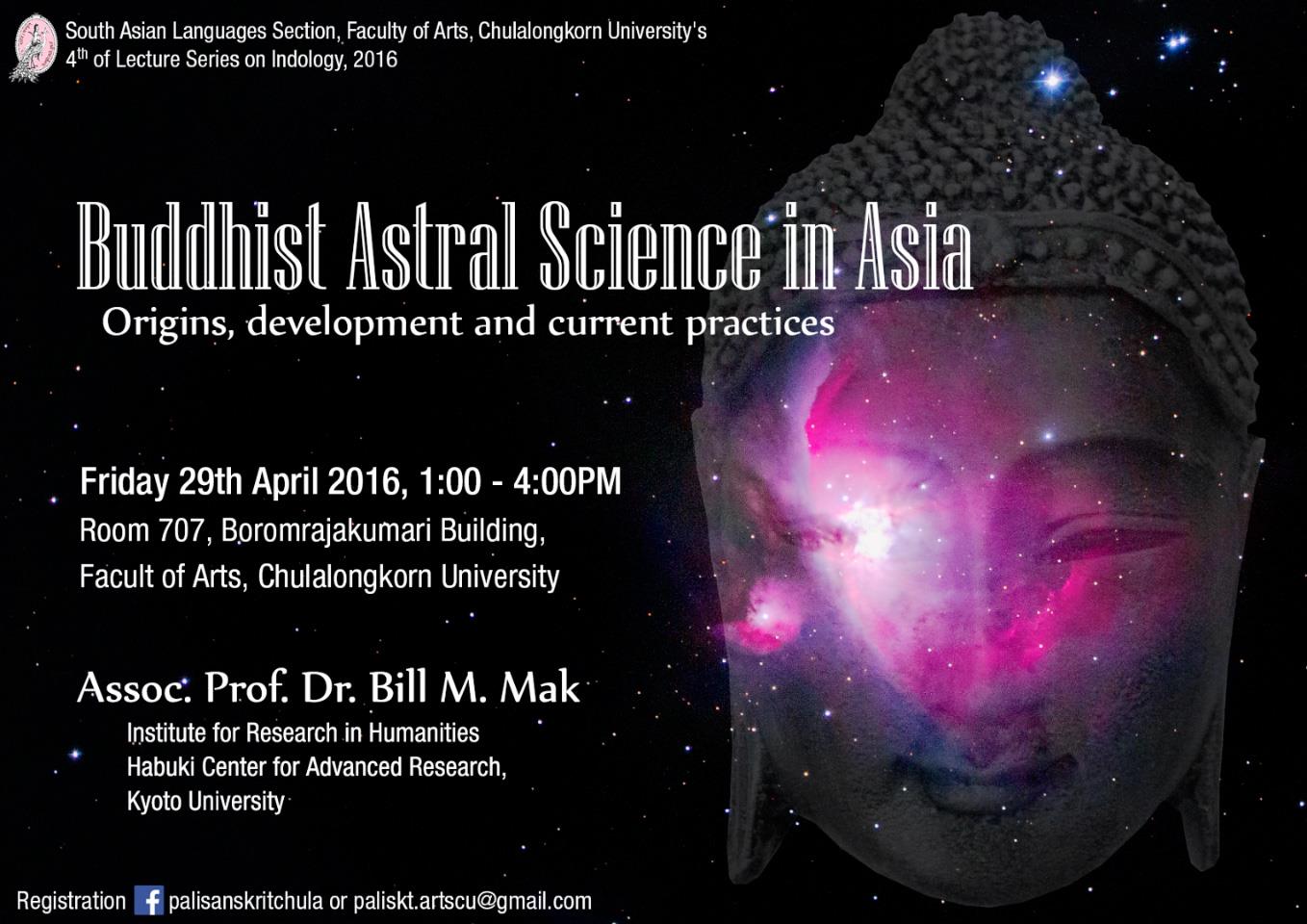Buddhist Astral Science in Asia

Topics:
1 Content of Astral science
2 Buddhist astral science in practice: Astral science in Thai Buddhism (patithin, horasat)
3 Astral science in Pāli Canon (Uposatha and the recitation of Pāṭimokkā; Eclipses; Abhidharma)
4 Mahāyāna texts: Astronomy and astrology in Śārdūlakarṇāvadāna, Mahāsaṃnipāta
5 Kumārajīva’s astral science and Amoghavajra’s Xiuyao jing
7 Planetary science and planetary worship (navagrahaśāntipūja)
